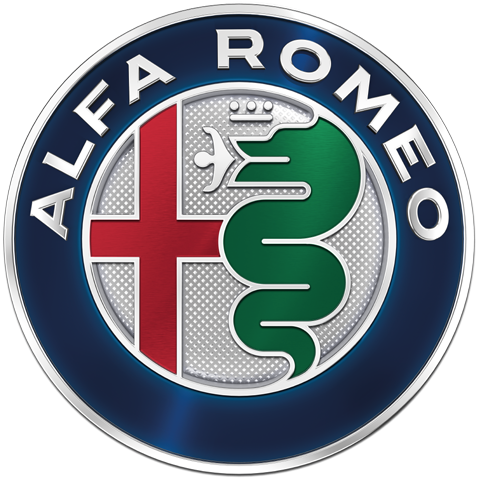
A STORY THAT MADE HISTORY
THE HISTORY OF A MYTH
The legend started in 1910, when Cavalier Ugo Stella acquired the shares of Società Italiana Automobili Darraq, the Italian plant of a French car maker. The first plant was at number 95 Strada del Portello in the north-west outskirts of Milan and the company was called “Anonima Lombarda Fabbrica Automobili” (Lombard Automobile Factory, Public Company), hence the acronym A.L.F.A.
1910sTHE BIRTH OF A LEGEND

1910
THE BIRTH OF A LEGEND
The origins of Alfa Romeo date back to The Società Italiana Automobili Darracq, founded in 1906 and located at 95, Strada del Portello, Milan, Italy.
When economic hardship hit in 1909, company shares were acquired by the organization's managing director, Italian aristocrat Ugo Stella.
On June 24, 1910, Stella relaunched and renamed his plant Anonima Lombarda Fabbrica Automobili – A.L.F.A. or “Alfa”.
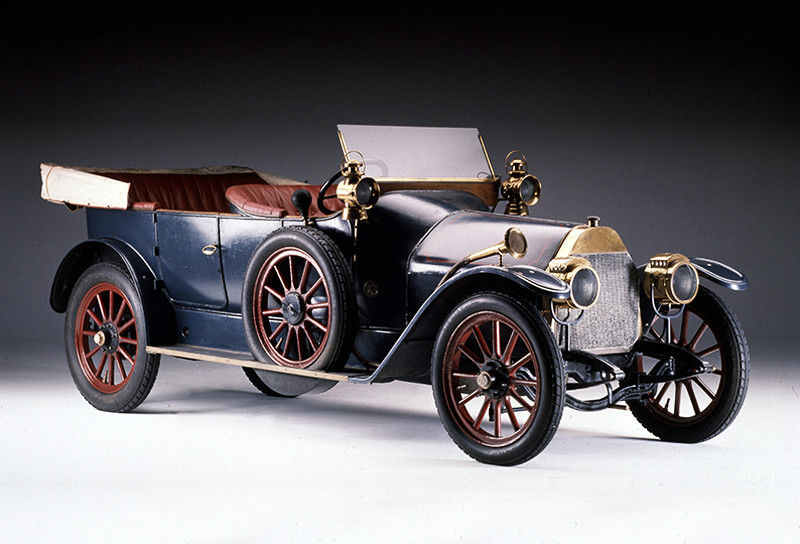
1910
Alfa's First Merosi-Designed Vehicle, the 24HP
Alfa’s young technical director, Giuseppe Merosi, was an ambitious young man who started out selling bicycles. Soon after, Merosi was designing cars and motorcycles for Fiat and Bianchi.
At Alfa, Merosi designed the first vehicle to come off the new production line at Portello in Milan, Italy. The 24HP featured a single block 4.1-liter engine, single drive shaft and reached a top speed of 62 mph.

1914
Merosi Designed the Alfa Grand Prix
Anxious to establish a reputation in international racing, Alfa assigned Giuseppe Merosi the task of designing a competitive sports car based on the 40-60 HP. The result was the Alfa Grand Prix, the first automobile to feature a twin spark ignition. The 4 cylinder 4.5-liter engine helped it to reach a top speed of 87 mph.
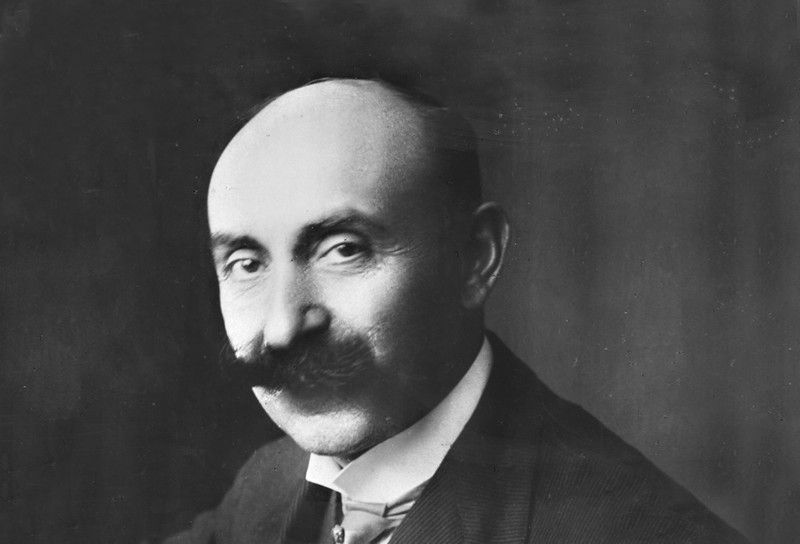
1915
WWI Forced a Change of Plans
During the First World War, Alfa lacked the funds needed to convert its automobile manufacturing. Nicola Romeo – a successful electrical engineer from Naples, Italy – purchased Alfa and other companies, and started producing airplane engines and portable compressors.
The firm was called Società Anonima Italiana Nicola Romeo & Company. The new badge was changed to read “Alfa-Romeo Milano”.

1918
Alfa Prospered During WWI
Automotive production ceased during the war. Merosi was transferred to the Railway Workshops in Naples, Italy, but the company continued to prosper.
In the winter of 1918, investors decided to take the company public with a new make on the original name – “Alfa Romeo”. The new company name was officially registered February 3, 1918.
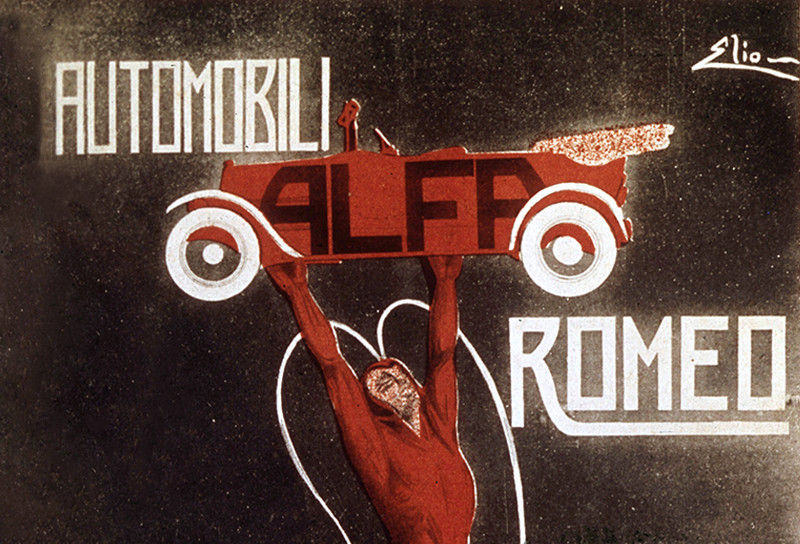
1919
The Return to Automotive Production
Alfa Romeo resumed production at the end of the First World War. They began by assembling parts that were still in stock, and shortly after started designing new models.
The Grand Prix – which had been sold-off during the war – was reacquired. It proceeded to turn heads in a series of important Italian races in the early 1920s, such as the Mugello circuit, Parma-Berceto and Brescia circuit. A bright new era had begun.

2005
Alfa Romeo Began Manufacturing the Alfa Romeo 159 and Brera
This was an important year for production. Alfa Romeo 159 combined safety, performance and comfort without compromising design and racing appeal. The Brera was compact yet powerful. Its design was inspired by classic Alfa Romeo styling. It would become a benchmark for the coupe sector.
1920sThe Race Era
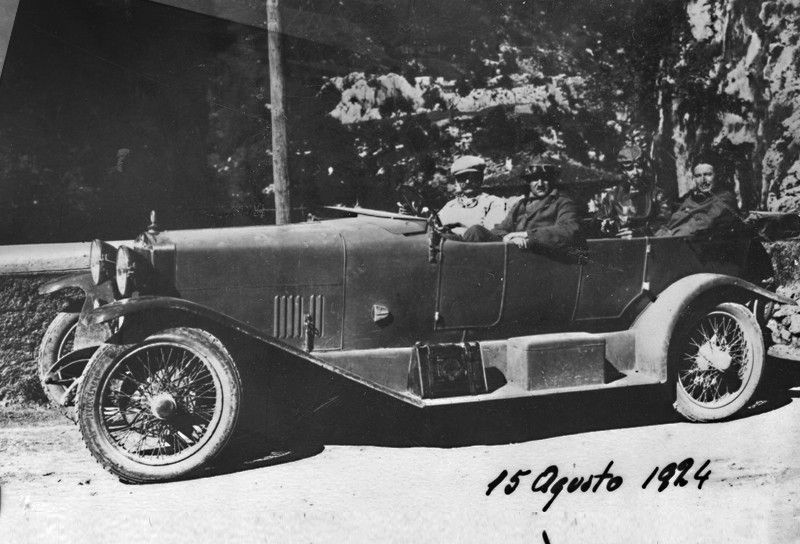
1922
Alfa Romeo Launched Merosi's Masterpiece
Alfa Romeo launched its RL, featuring a straight-6 engine with an overhead rocker arm and valves, and brakes on all 4 wheels. The Alfa Romeo RL was a tremendous success. It became known as Giuseppe Merosi’s masterpiece. International orders poured in, and 2,640 automobiles were built.
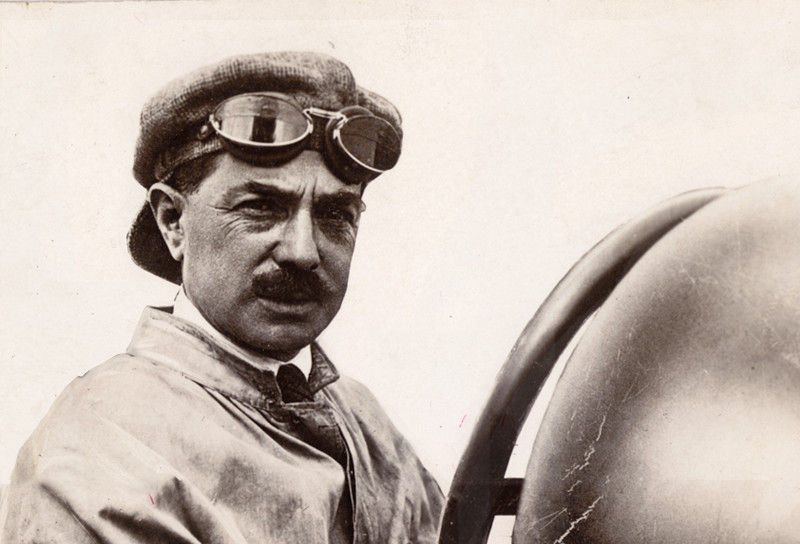
1923
Alfa Romeo RL Conquered the Targa Florio
The legendary Alfa Romeo race car driver, Ugo Sivocci, wanted to break a string of second- place finishes. To prepare for the legendary Targa Florio race in Sicily, he painted a white square with a “Quadrifoglio”- a four-leaf clover - on the front of his Alfa Romeo RL Targa Florio.
As luck would have it, he finished in first place. Ascari finished second and Masetti fourth, both of whom were driving RLs. The victorious results of this difficult, open road, endurance race marked the beginning of Alfa Romeo's racing success.
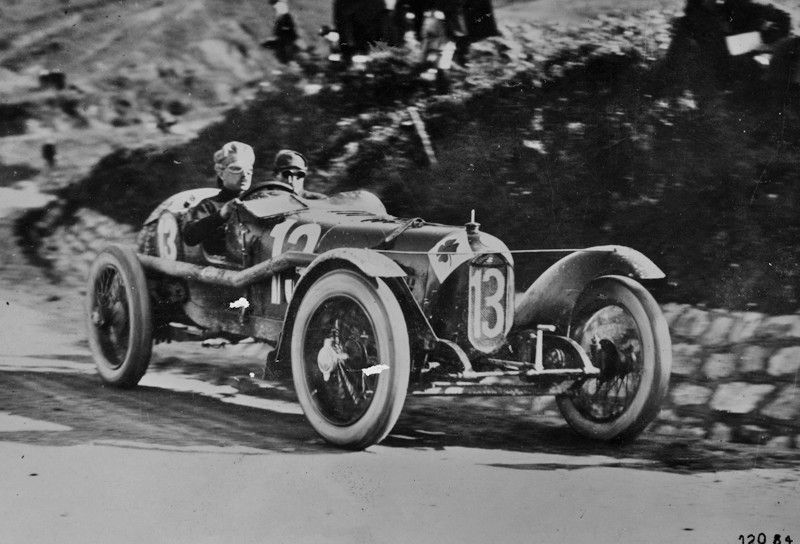
1923
Sivocci and his Four-leaf Clover
Shortly after his famous victory at the Targa Florio, Sivocci was testing a new race car at the Monza circuit that did not bear his lucky four-leaf clover and he tragically crashed and lost his life and a legend was born.
This marked the beginning of a tradition: all future Alfa Romeo race cars would feature the four-leaf clover on a white triangle — with the missing corner symbolizing the loss of Sivocci.
Today, Sivocci’s clover remains a symbol of race-worthy capabilities and, of course, a symbol of good luck.
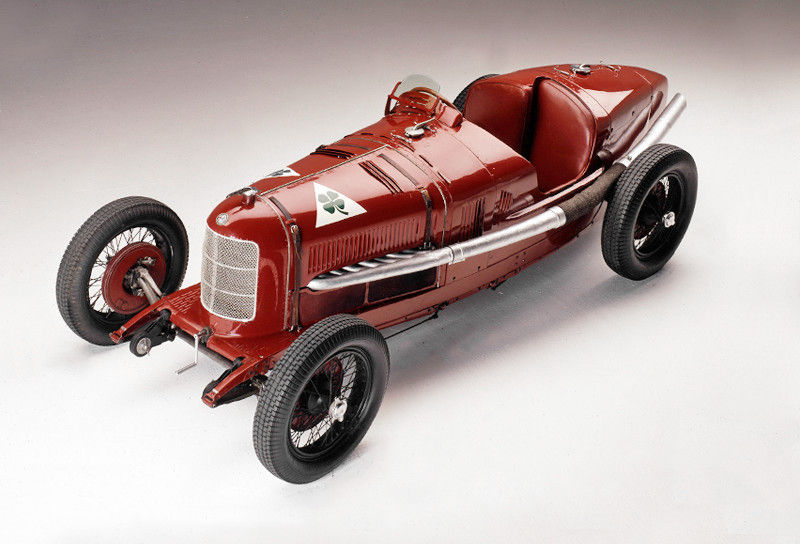
1924
The Launch of the P2
This marked the era of Vittorio Jano, one of the legends of Alfa Romeo racing. The great designer's first creation was the P2, the first Alfa Romeo with an 8-cylinder supercharged engine and two forced-induction carburetors. Only six models were built.
P2 became one of the best Grand Prix automobiles of the 1920s.
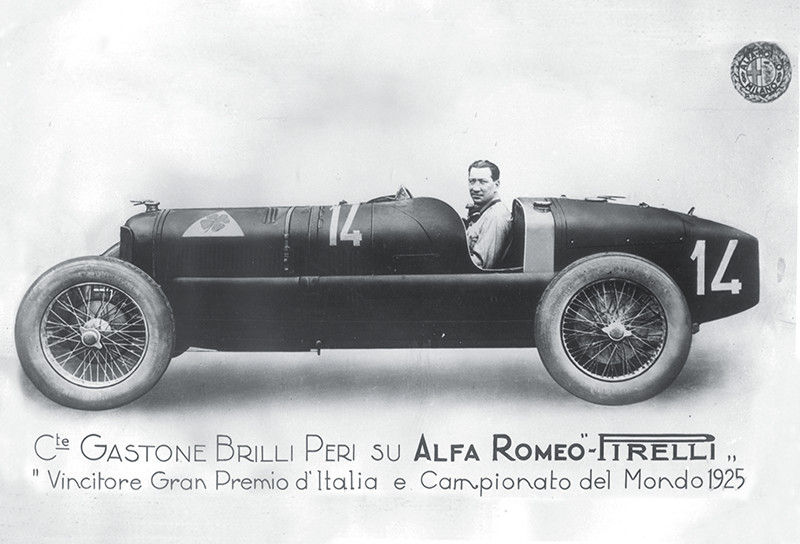
1925
Alfa Romeo Won its First World Championship
Gastone Brilli Peri won Alfa Romeo's first World Championship in Jano's Gran Premio Tipo P2. Four Alfa Romeos crossed the finish line – one after the other – with a 45-minute lead on the fifth-placed driver.
The spectacular victory gave Alfa Romeo a reason to add the laurel wreath to its logo.
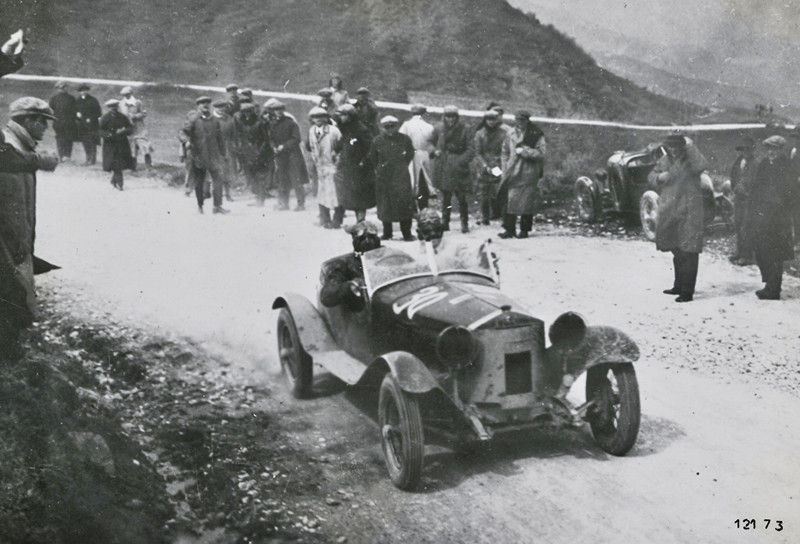
1928
Alfa Romeo’s First Victory at the Mille Miglia
Considered the “The World's Best Motor Race”, the Mille Miglia is an open-road endurance race consisting of a thousand-mile figure eight that loops through the Italian cities of Brescia and Rome.
In 1928, Campari and Ramponi won the record-breaking race in the new Alfa Romeo 6C 1500 compressor.
Alfa Romeo realized that its cars were becoming status symbols, and the company began to consider mass production.

1929
The “Alfa” of Ferrari Racing Team
Enzo Ferrari established his Scuderia Ferrari racing team in Modena, Italy. It included more than 40 of the finest racing drivers of the age, including Ascari, Campari and Nuvolari. The team managed all of Alfa Romeo's racing achievements. The cars were known as “The Ferrari Racing Team Alfas”.
1930s6C 1750 Became a 1930s Icon
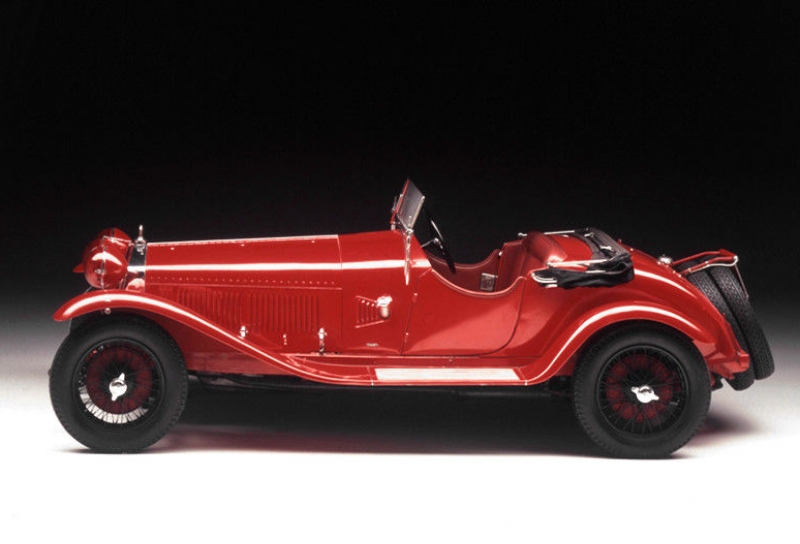
1930
6C 1750 Became a 1930s Icon
Once again, it was Jano who unveiled an iconic automobile. The 6C 1750 was launched at the Rome Motor Show in 1929. It was a variation of the 6C 1500, with a more powerful engine.Its exceptional performance was proven the following year when Nuvolari and Guidotti won the Mille Miglia race with a record setting average speed of 62 mph; they were followed by three more 6C 1750s – a truly epic result.
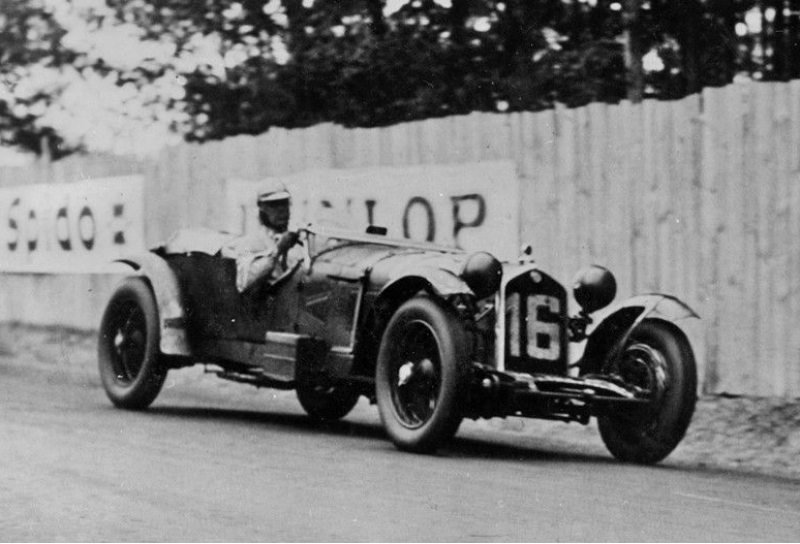
1931
Alfa Romeo 8C 2300 Delivered Italy’s First Win at Le Mans
Jano’s latest creation was designed to end domination of Le Mans by the British and French. With an innovative 8-cylinder engine and long wheel base, the 8C 2300 was up to the task. Drivers Lord Howe and Sir Henry Birkin won the 1,875-mile race at speeds averaging 78 mph
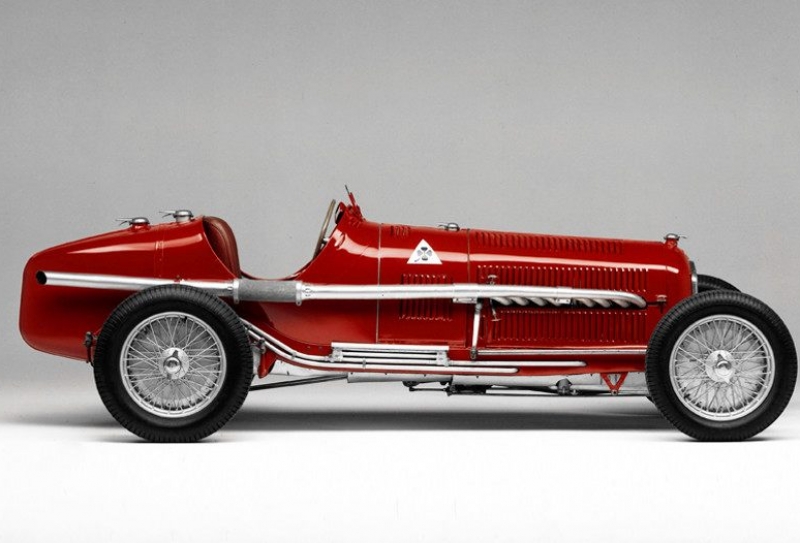
1932
Nuvolari Triumphed in Jano’s P3
The Tipo B – also known as the P3 – was Alfa Romeo's first automobile specifically designed for endurance races. It was Jano's finest single-seater, as it was slender, fast and high tech with differential gears and two V-drive shafts to transmit power to the rear wheels.Nuvolari won every race that year in the P3, including the Monaco Grand Prix, the Targa Florio, the Italian Grand Prix, the French Grand Prix, the Coppa Ciano and the Coppa Acerbo.

1933
Ugo Gobbato Became the New Director of Alfa Romeo
In 1933 Alfa Romeo was bought out by Italy’s Institute for Industrial Reconstruction (IRI) and Nicola Romeo was replaced by Ugo Gobbato.Under the new director, Alfa Romeo's racing tasks were transferred to the Ferrari team and the prancing horse replaced the four-leaf clover on all racing cars
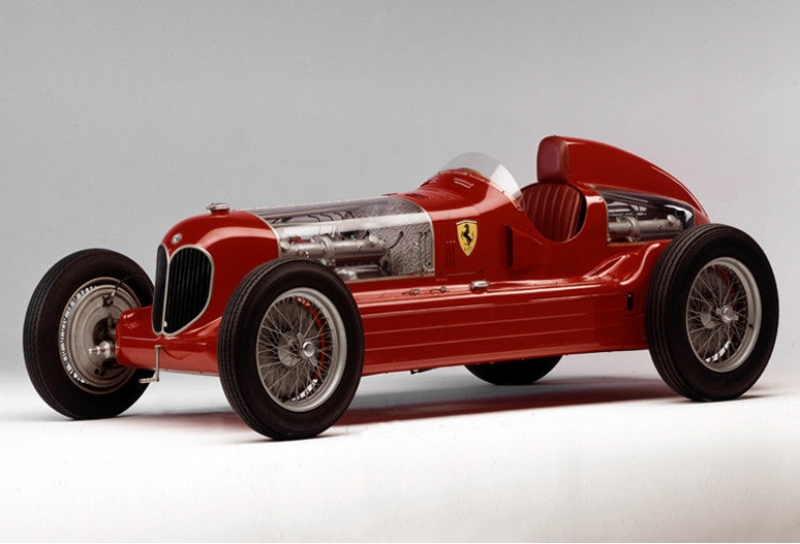
1935
Bimotore Broke European Speed Records
German automakers were dominating the world of racing, so Alfa Romeo decided to evolve. Luigi Bazzi designed the powerful Bimotore for Scuderia Ferrari; only two were built. This single seater with two 8-cylinder inline engines broke two European speed records.
Nuvolari pushed the Bimotore to a speed of 200 mph over a mile, reaching a top speeds of 226 mph.
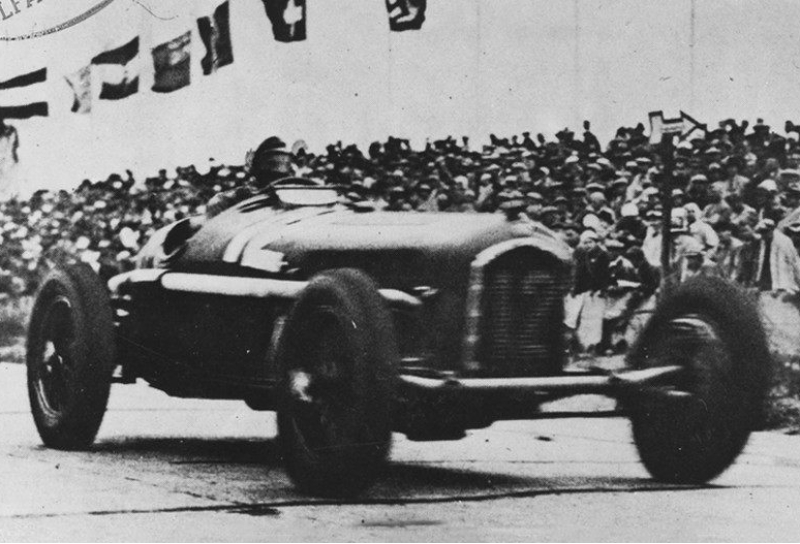
1935
Nuvolari Made History at the German Grand Prix
On July 28, 1935, an epic victory was achieved at the most challenging circuit of all, the Nürburgring. Driving Jano’s old P3, Tazio Nuvolari triumphed over modern German sports cars and wrote a memorable page in Alfa Romeo’s racing history. Representatives of the German government were forced to congratulate Nuvolari, who showed once again that he was the number one driver.
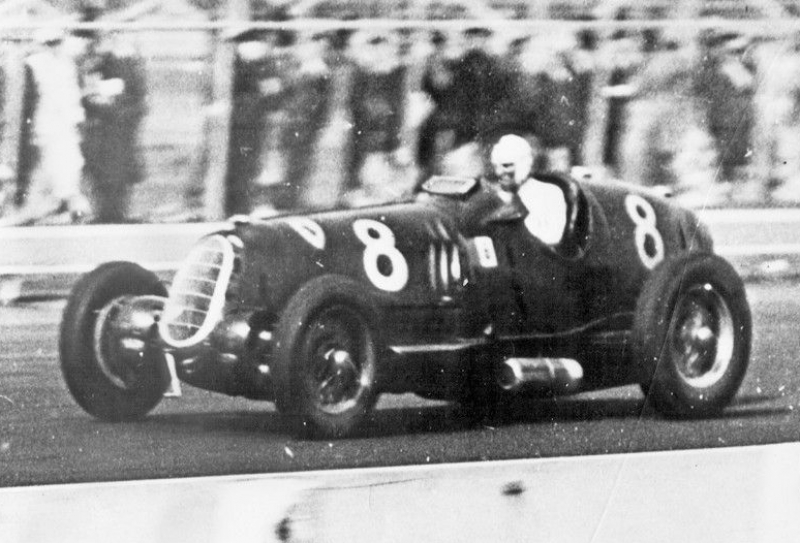
1936
The American Dream: Nuvolari Won the Vanderbilt Cup
Scuderia Ferrari entered three Alfa Romeos at the Vanderbilt Cup in New York. Nuvolari was still recovering from a bad crash in Tripoli, Libya, that compromised his health, but that did not stop him. He went on to win the Vanderbilt Cup in an Alfa Romeo Gran Premio Tipo C. This victory sealed Nuvolari’s and Alfa Romeo’s position across the Atlantic
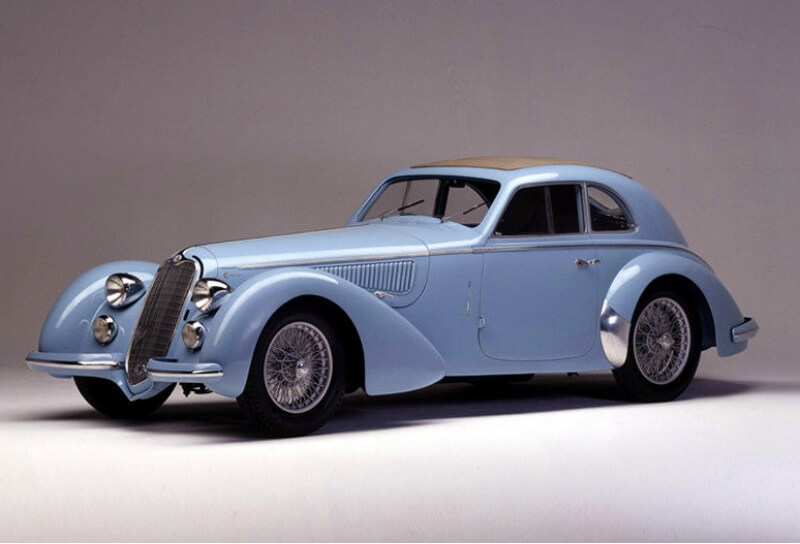
1937
The Aerodynamic Alfa Romeo 8C 2900
The 8C 2900 was the world's most beautiful sports car. Its two-seater chassis made it ideal for motor racing. It was also produced as the 8C 2900B in two stylish variations: the short wheelbase, Spider Corsa, and the long wheelbase, Coupe Touring.The racing version immediately delivered a result that went down in the history of Alfa Romeo racing: an incredible three-win feat at the 1938 Mille Miglia.
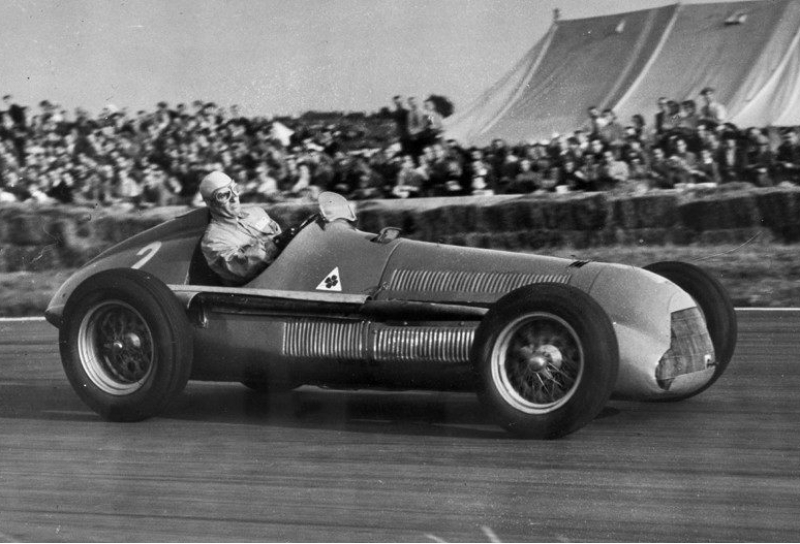
1938
Born to Win: The Alfa Romeo 158
Designer Gioacchino Colombo helped shape Alfetta, the most enduring single-seater in modern racing history. Slender but incredibly nimble, it took first and second place during its debut at the Coppa Ciano race in Italy.The initial victories were followed by an unbroken series of Grand Prix triumphs that continued until 1950, when it won its first Formula 1 title.
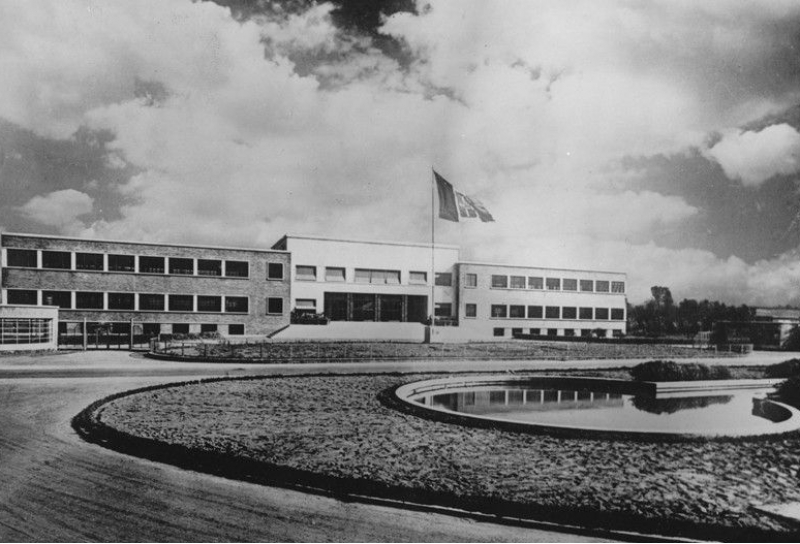
1939
Alfa Romeo Began Building a New Engine Factory
Ugo Gobbato arranged for a foundation stone to be laid at Alfa Romeo’s new San Martino factory in Pomigliano d’Arco, near Naples, Italy. It was destined to become a center of modern aircraft engine production.
1940sA NEW RENAISSANCE

1945
A Company Without a Leader or a Factory
On the morning of April 28, Ugo Gobbato was shot and killed by an unknown gunman as he cycled to work. He was wrongly accused of collaborating with the Germans and Italian fascists. Without a leader and with most of its factories destroyed by the war, Alfa Romeo found itself in a difficult situation.
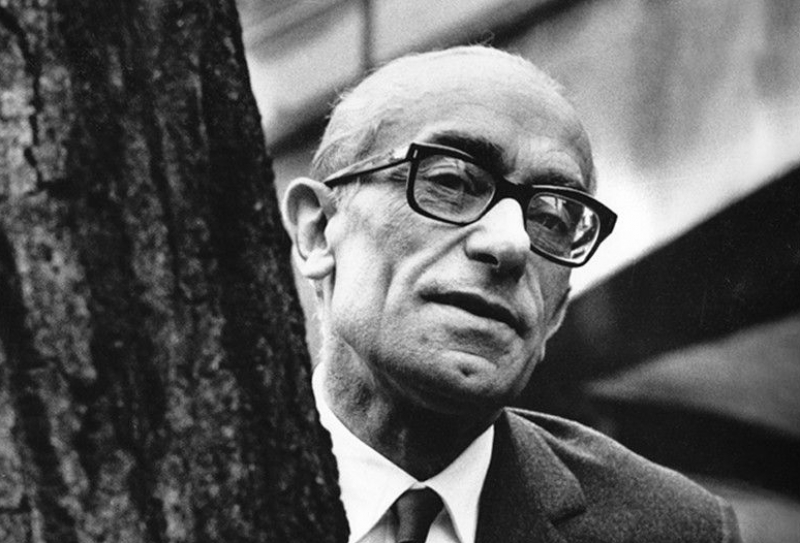
1945
Orazio Satta Puliga Took the Helm
While the new chairman, Pasquale Gallo, was appointed to demilitarize Alfa Romeo, responsibility for design was handed to the engineer Orazio Satta Puliga. He made a fundamental contribution in relaunching Alfa Romeo once and for all.

1947
The Freccia d’Oro
Alfa Romeo began production of two new automobiles that would epitomize the very best of post-war Italian style, sophistication and class. The first was the Freccia d’Oro, a version of the 6C 2500 Sport, with an abbreviated, rounded tail.
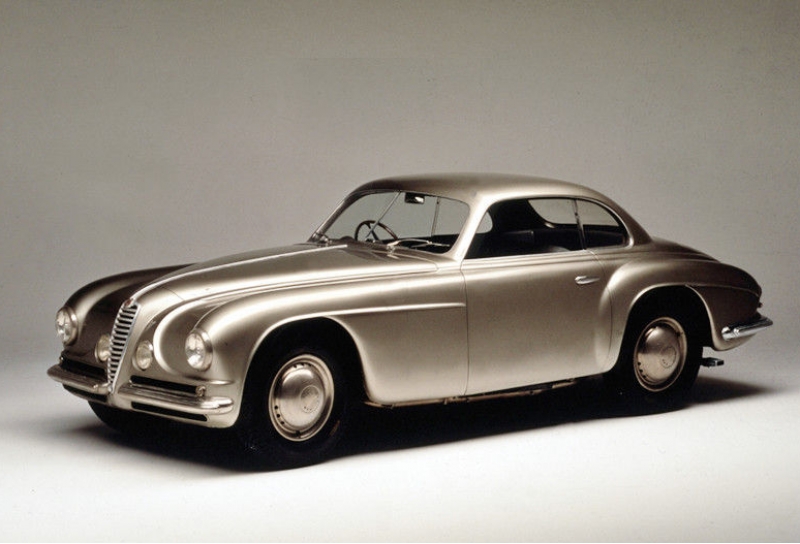
1949
The Villa D’Este
The second outstanding design was named after the Competition of Elegance (Concorso d’Eleganza), which is held every year on the shores of Lake Como, Italy. Alfa Romeo’s Villa D’Este was the Super Sport version of the 6C 2500 Touring, a triumph of classic lines. It took top prize at the Gran Premio Referendum.
1950sINTRODUCING THE HEROS
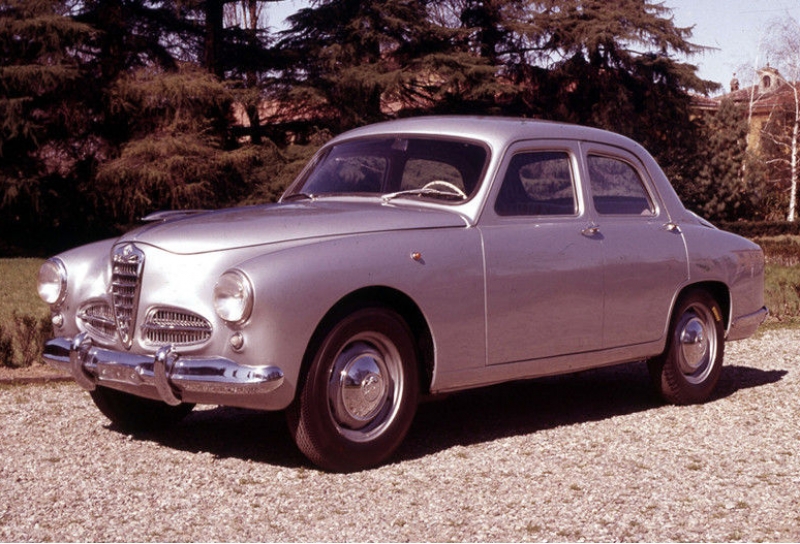
1950
Alfa Romeo 1900, the Family Car that Won Races
Modern and practical, Alfa Romeo designer Orazio Satta Puliga considered the 1900 to be the ultimate choice for the middle class. It offered great performance and a heritage of brilliant sporting achievements at a competitive price.
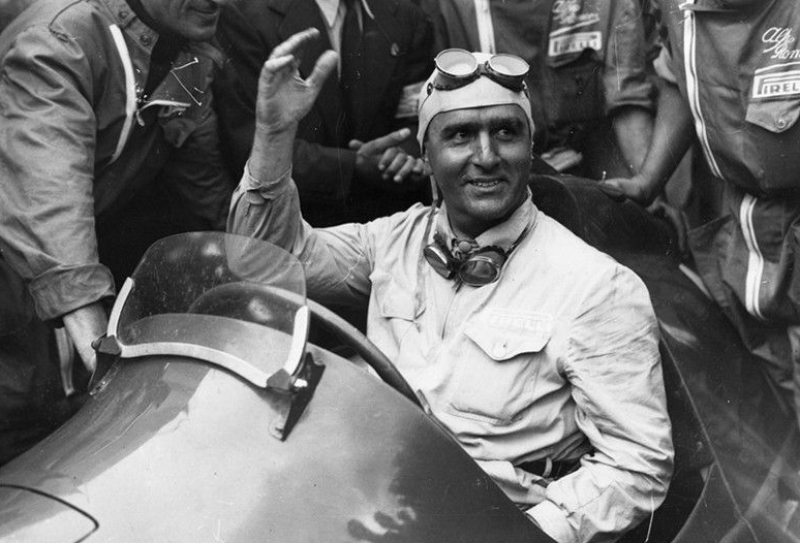
1950
The First Formula 1 Championship was Won by Farina
The First Formula 1 Championship was Won by Farina.
Nino Farina just barely beat his Alfa Romeo teammate Manuel Fangio to win Alfa Romeo's first Formula 1® World Championship at Silverstone, England. He raced an Alfetta 158, a stunning single-seater designed by Gioacchino Colombo.
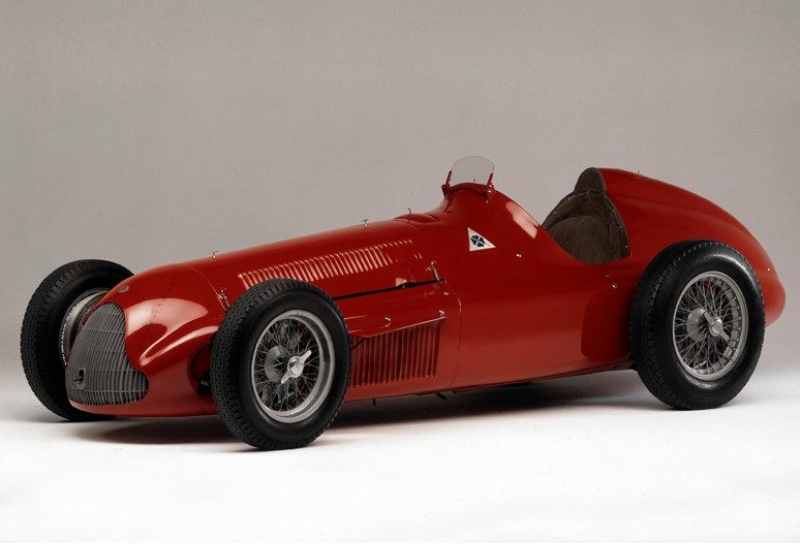
1950
The 159 was Born
Enhancements were made and the name was changed, but the soul stayed true. The 159 received a more powerful engine and innovative De Dion suspension for perfect road handling. It would become the star of the 2nd World Championships the following year.
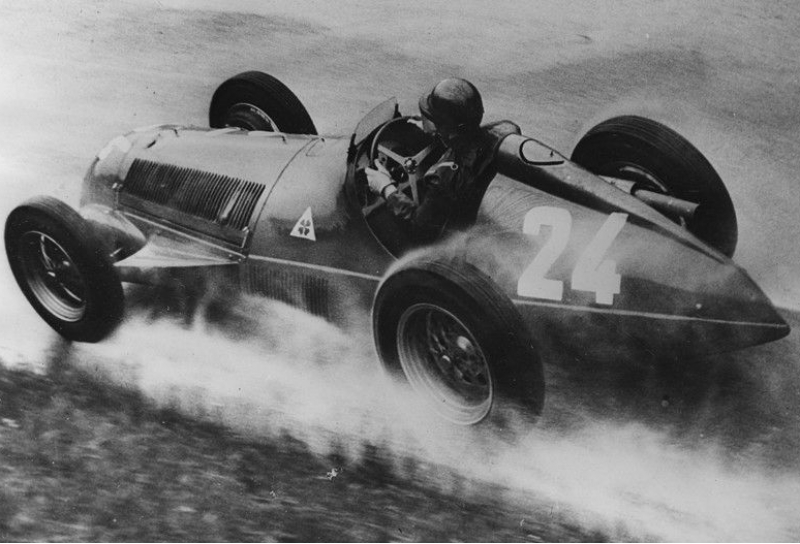
1951
Fangio Won the 2nd Formula 1® Championship
Manuel Fangio, one of the greatest Formula 1® drivers of all time, took to the podium after winning the second World Championship. He was driving a 159 Alfetta, also known as the “Goddess of love,” as it could fill a driver’s heart with the endless pleasure of driving.Fangio left no room for his rivals, wiping them all aside with his precise and spectacular style.
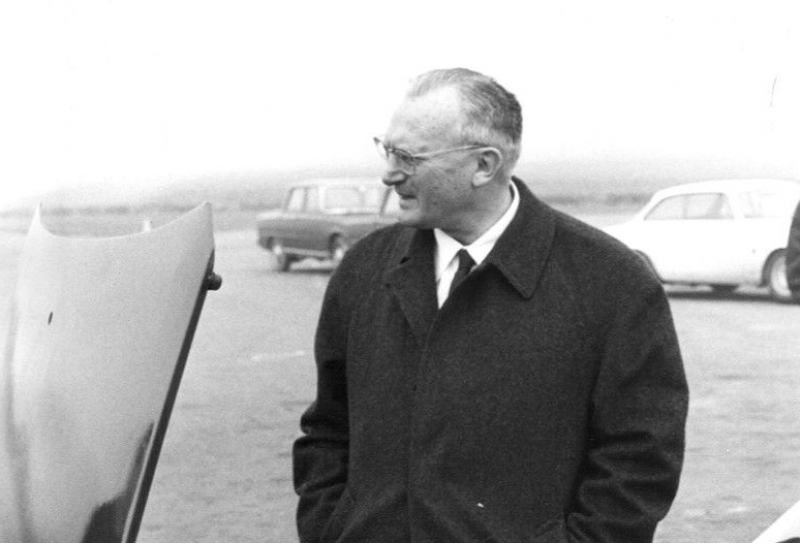
1951
Luraghi Joined the Alfa Romeo Board
In the early ‘50s Giuseppe Luraghi, the General Manager of Italy’s Finmeccanica Group, took control of Alfa Romeo. He continued to guide and grow the company until 1974. Those years were a time of enormous growth, including plans to manufacture the Giulietta and other new models that would take Alfa Romeo to bold new heights.
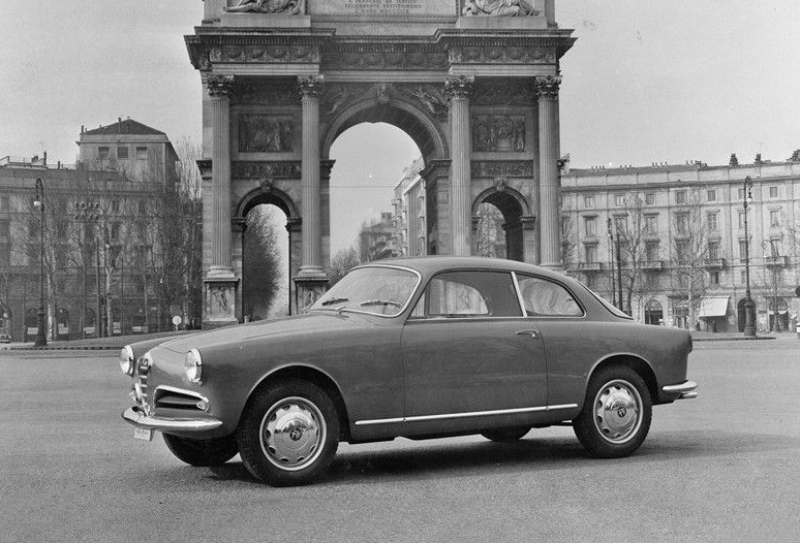
1954
The Birth of the Giulietta
Bertone created a legend: the Giulietta.###bb###Giulietta became one of Alfa Romeo’s best-loved automobiles. There were many different variations: the Berlina, Ti, Sprint and Spider – both in a “Veloce” version – Sprint Speciale and Sprint Zagato.The Spider was designed by Pininfarina, who had a soft spot for his creation, affectionately calling it “la signorina” (“the young lady”).

1955
The Alfa Romeo 750: Abarth’s Prototype
Carlo Abarth was asked to design a competitive vehicle at a time when Alfa Romeo had abandoned motor racing to concentrate on the Giulietta, however work on the 750 proceeded anyway. Giulietta’s light alloy engine was modified and its capacity increased to 1.5-liters, the maximum allowed in the Gran Turismo category.Development stopped due to business reasons, and the 750 remained an experimental prototype.
1960sTIMELESS ICONS
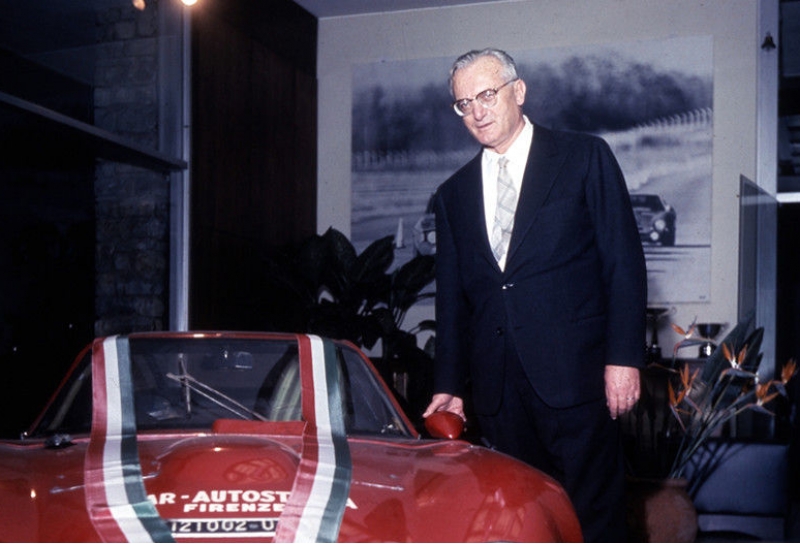
1960
Luraghi was Appointed Alfa Romeo’s New Chairman
The future was bright when Giuseppe Luraghi was named chairman. With a new chairman and the launch of a new plant in Pomigliano d'Arco near Naples, Italy, Alfa Romeo anticipated steady growth in Italy and beyond
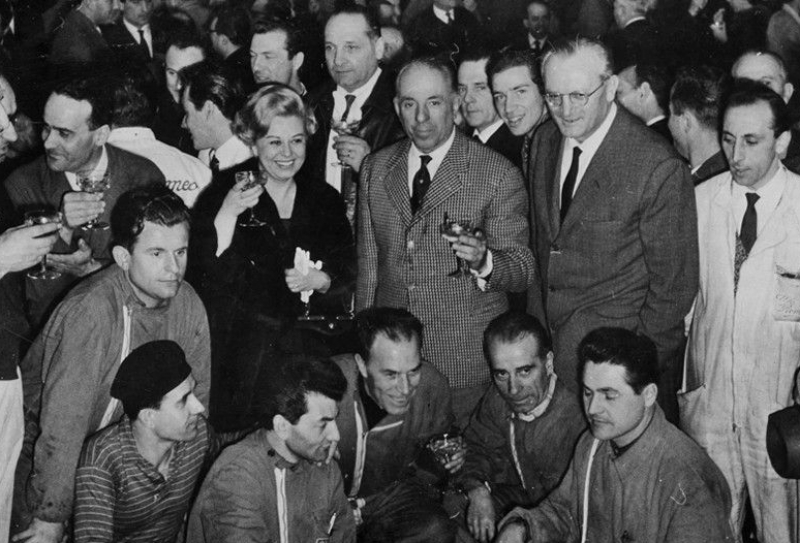
1961
Alfa Romeo Celebrated 100,001 Giuliettas
The unstoppable success of "Italy’s sweetheart" hit the 100,001 mark. This important milestone confirmed Italy’s passion for the Giulietta. To mark the occasion, the traditional bottle of champagne was opened at Portello in Milan, Italy. A special guest at the ceremony was another equally famous Giulietta – the actress Giulietta Masina.
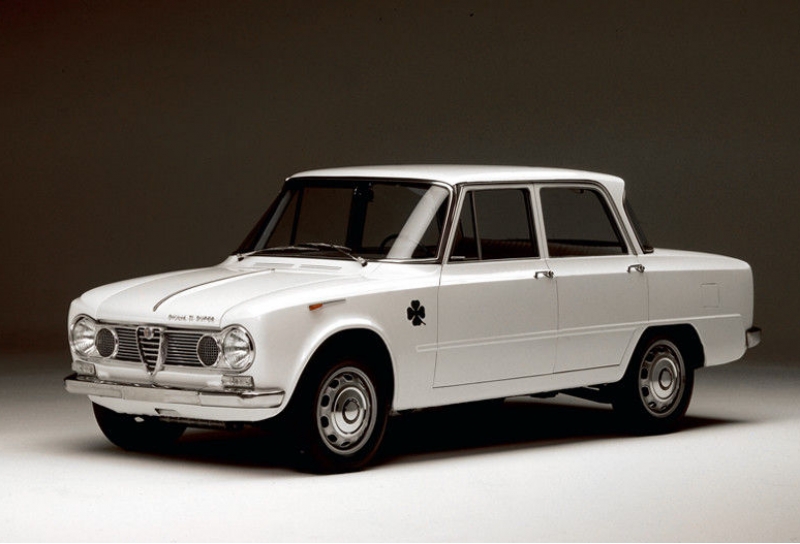
1962
The Giulia, Designed by the Wind
The automobile that challenged conventions and revolutionized design: a cut-off tail, concave sides, low nose and sinuous windshield. Tested in the wind tunnel in Turin, Italy, the Giulia was much more highly evolved than normal. It had a record aerodynamic coefficient of 0.34 points, lower even than the Gran Turismo class. It was pure innovation: a jewel of design, mechanics and passenger safety.
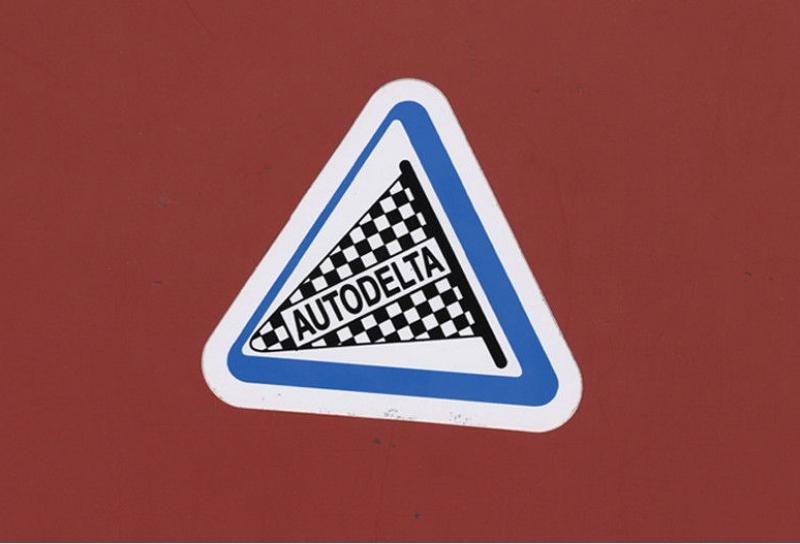
1963
Alfa Romeo’s Return to Motor Racing
Alfa Romeo returned to racing with Carlo Chiti’s Autodelta Team. Chiti's people were committed to advancing Alfa Romeo's sporting image and international racing reputation. The relationship would continue until 1984.
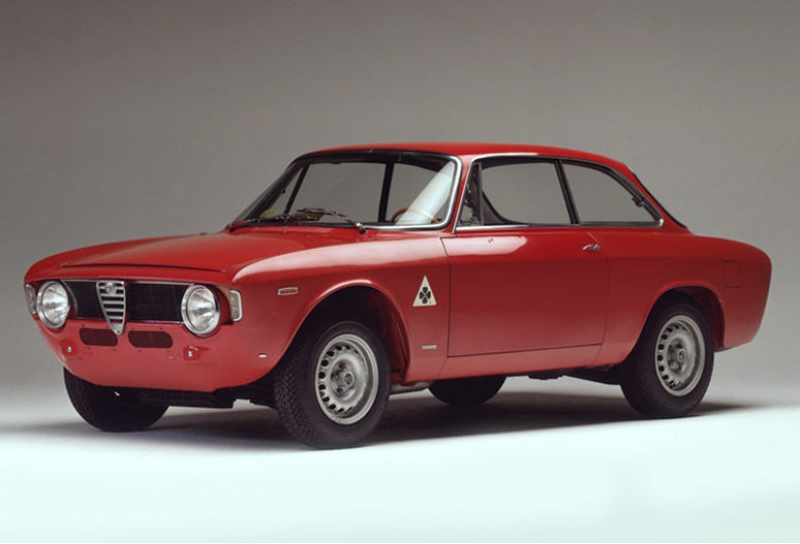
1965
A Win a Day With The GTA
GTA was short for “Gran Turismo Alleggerita.” This race car was specifically designed for the Turismo category.Bertone and Giugiaro’s work of art retained the same lines as the Giulia Sprint GT, with lighter aluminum body panels and a 1600 engine with double ignition cylinder head.Fast and fiery, it would burn the competition at three consecutive editions of the European Touring Car Championship – ’66, ’67 and ’68.

1965
Alfa Romeo's 2600 Stood for Class, Comfort and Elegance
The Alfa Romeo 2600 featured a powerful 6-cylinder engine with five synchronized gears and outstanding road handling. Three versions were made: the Berlina, Bertone’s Sprint and Touring’s Spider (Zagato’s 2600 SZ would appear at a later date).

1966
The Alfa Romeo Duetto
The legend of the Duetto. Produced for 27 years, the Duetto was Alfa Romeo's most enduring model and had a unique cuttlebone shape and boat-like tail.
The Duetto Spider earned a permanent place in American popular culture. A special version of the Spider – nicknamed “The Graduate” – was sold in the U.S. after it was featured in the renowned 1967 movie.
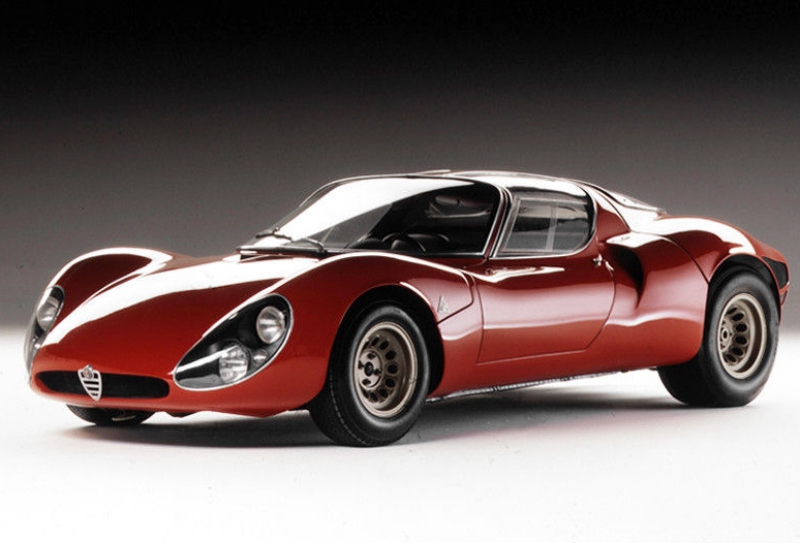
1967
The Tipo 33: The True Alfa Romeo Legend
Alfa Romeo asked designer Franco Scaglione to add life and beauty into the mechanics of the Tipo 33, Alfa Romeo's 33/2 racing model. He delivered a true masterpiece – the 33 Stradale, known as one of most beautiful vehicles ever created. Only 18 were ever produced, and today it is valued at over 13 million dollars. Its shape was stylish, sculptural and sinuous. The vehicle created a sense of movement and aerodynamics.The 33 Stradale had a perfect design, as it was a sophisticated sports sedan brimming with charm, audacity and function. It would inspire Alfa Romeo's modern-day 4C.
1970sSPORTS AND F1 CHAMPIONSHIPS

1970
The Alfa Romeo Montreal – From Concept to Production
Bertone’s pen produced the original prototype that was introduced at Expo 67 in Montreal, Canada. Combining race car thrills with the essentials of a daily driver, the Montreal's V8-cylinder engine (borrowed from the 33) produced 200 HP and top speeds of 137 mph.
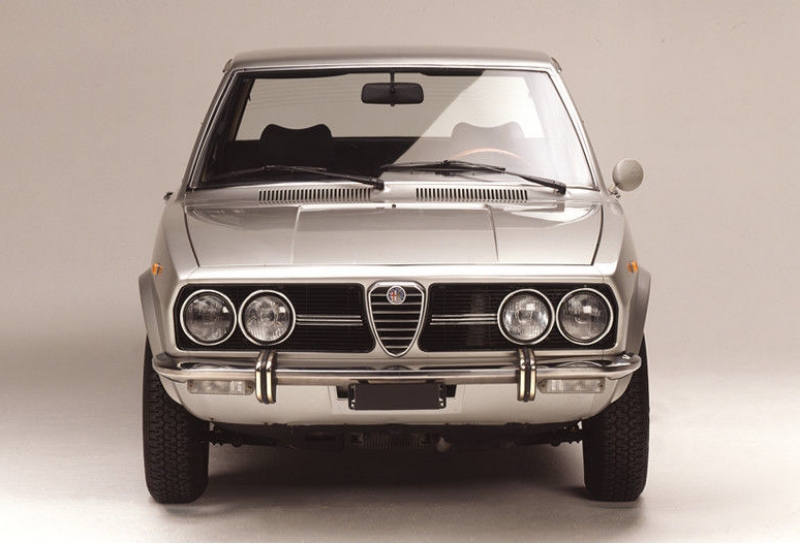
1972
Return of the Alfetta
Alfetta inherited its name from – and shares its De Dion suspension system with – Alfa Romeo's Formula 1® world champion, the Alfa Romeo 159, also known as Alfetta (“Little Alfa”). It was a stylish, complex sports sedan. Front engine and rear gearbox gave the Alfetta perfect weight distribution – a feature that would set a precedent for the competition.Many different coupe and sedan versions appeared until 1984, and engine sizes included 1.6, 1.8, 2000 and 2500 6-cylinder.

1976
Alfa Returned to Formula 1® with its Brabham™ Engine
Alfa Romeo returned to Formula 1® by building the engine for Brabham™. A powerful single-piece 12-cylinder 3000 cc boxer engine with a Spica fuel injection system that produced 500 HP at 1500 rpm.Driven by Watson and Lauda, the incredible downforce produced by the fan on the back would earn it the nickname of "Fan Car" during the 1978 Formula 1 championships.

1972
Alfa Romeo GTA Racked up Straight Wins at the ETCC
The GTA Junior was the GTA 1600's mischievous little brother, with a lower (1300) cc and design cues that included a contrasting stripe on the side and large snake logo on the hood. Agile and super-fast, it locked up a series of victories in Group 2 at the European Championships.It won every competition in 1972 and secured the European Touring Car Challenge drivers' and manufacturers' championships, outranking automobiles that were much more powerful.

1974
The Alfa Romeo “bug”
In 1974 Rudolf Hruska was appointed head designer at Alfa Romeo but it was the great Orazio Satta Puliga who expressed it best. Before leaving his role as technical director, during an interview in 1970, Puliga said:"Alfa Romeo is not just an automobile factory… It’s a kind of illness, a zeal for a means of transport. It’s a way of life, a unique view on how to design a motor vehicle. It’s all about feelings, passion, anything that has more to do with the heart than with the head.” It was, and continues to be, a “bug” every Alfa Romeo enthusiast shares.
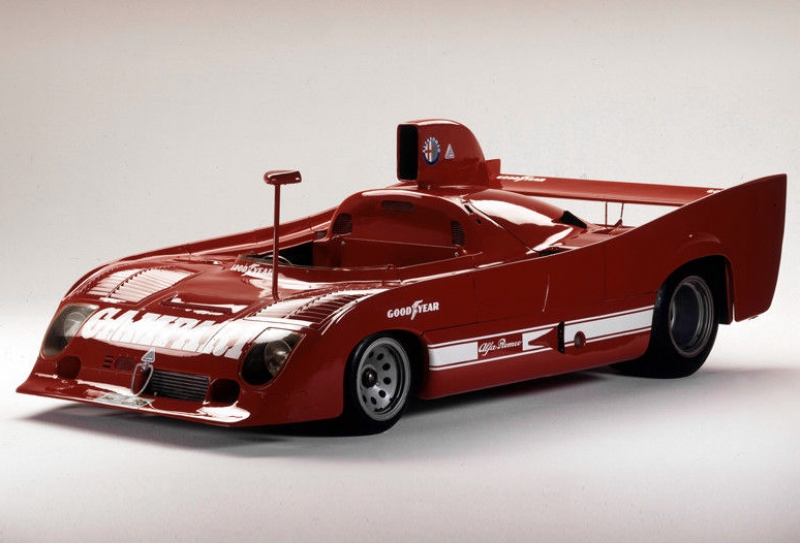
1975
The Alfa Romeo 33 TT 12
Designed by engineer Carlo Chiti, this racing prototype had a unique tubular chassis – “Telaio Tubolare” which was abbreviated to TT. Powerful and victorious, it came with a 12-cylinder 500 HP boxer engine.
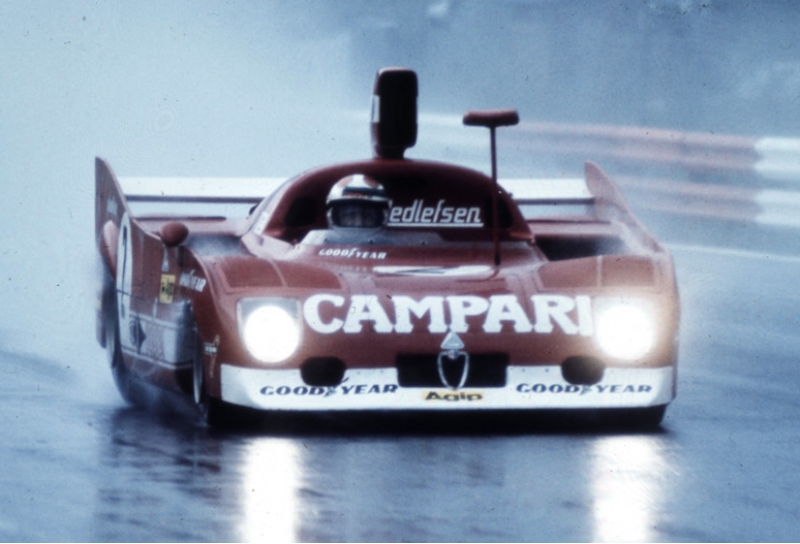
1975
Alfa Won its First World Sportscar Championship
The Alfa Romeo 33 TT 12 proved to be nearly unbeatable. It won seven out of eight races with Arturo Merzario at the wheel in four of them.
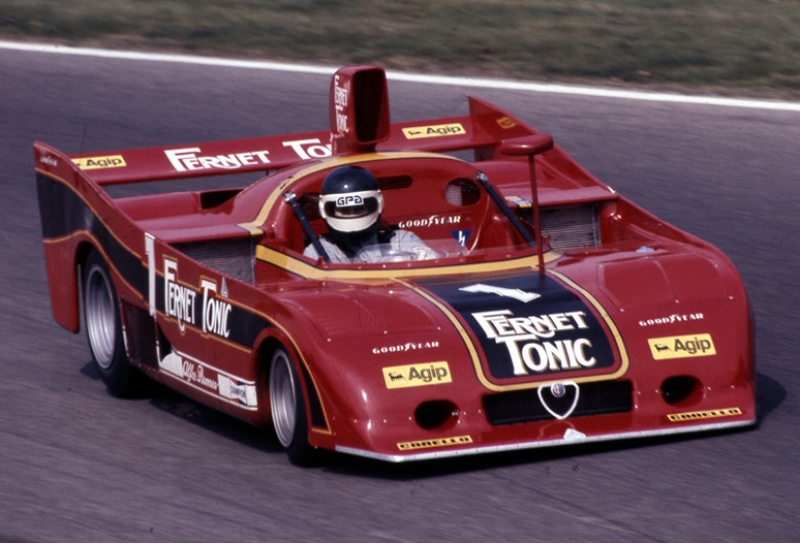
1977
World Sportscar Champions - again
The 33 SC 12 – an evolution of the 33 TT 12 – was an undisputed triumph. It enabled Alfa Romeo to take the World Sportscar Championship, winning all eight races it entered.
1980sDESIGN FIRST
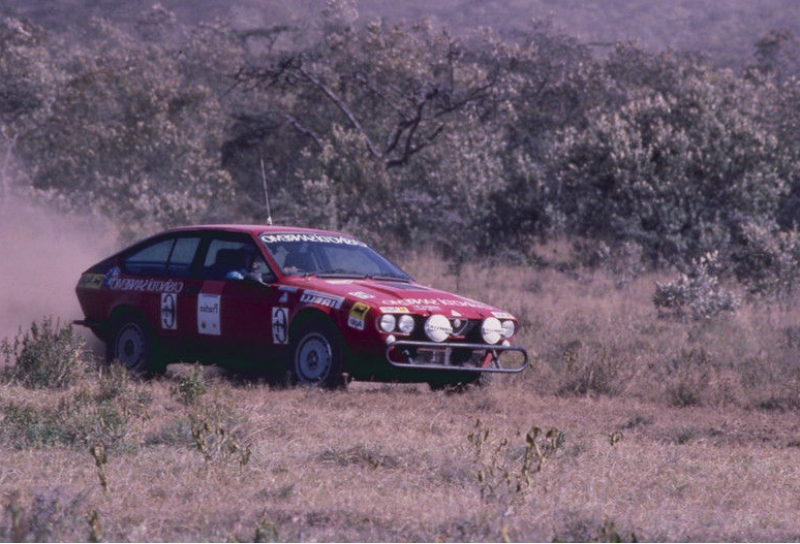
1981
The V6 Transformed the Alfetta coupe
The top-of-the-range Alfetta coupe was equipped with a V6 engine that turned it into a supercar. It won turismo class competitions in Europe and achieved considerable success in the United States.
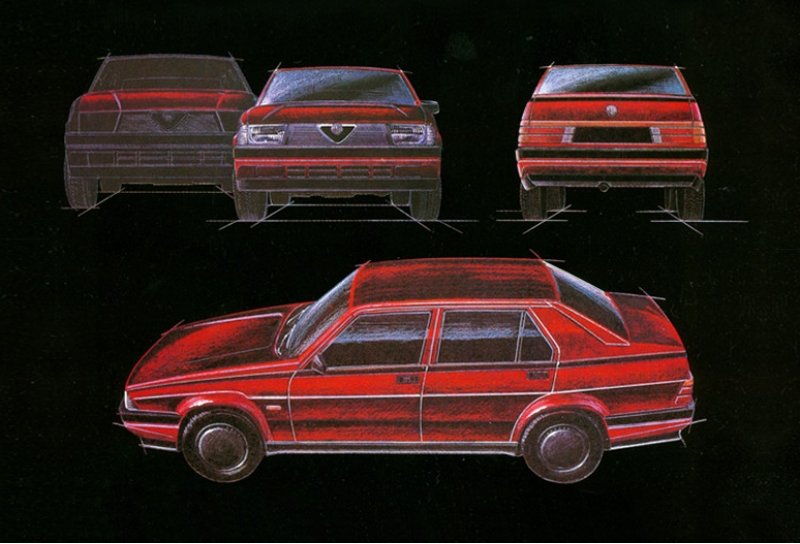
1986
Alfa Romeo Launched its Milan Design Center
When Finmeccanica sold Alfa Romeo to the Fiat group, its Design Center was moved to an industrial complex in Arese, near Milan, Italy. Managed by Walter de Silva, the center was destined to handle significant projects like the 145, the Proteo and Nuvola prototypes, the 156, the 147 and the MiTo.
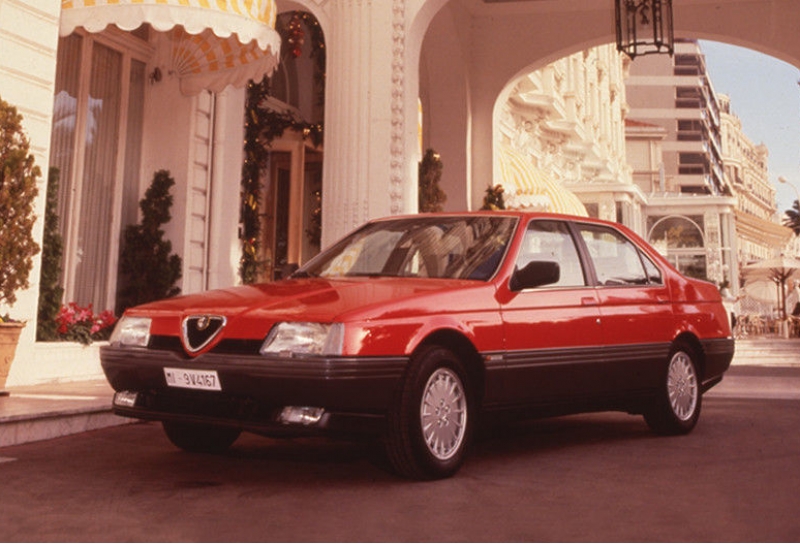
1987
The Alfa Romeo 164 made Waves in America
Designed by Pininfarina, the Alfa 164 was the first automobile produced after Alfa Romeo was sold to the Fiat group. A top-of-the-line sedan, it was roomy, powerful and stylish. It became so popular in America, that special versions were made for the U.S. market.
1990sTHE PODIUM, AGAIN
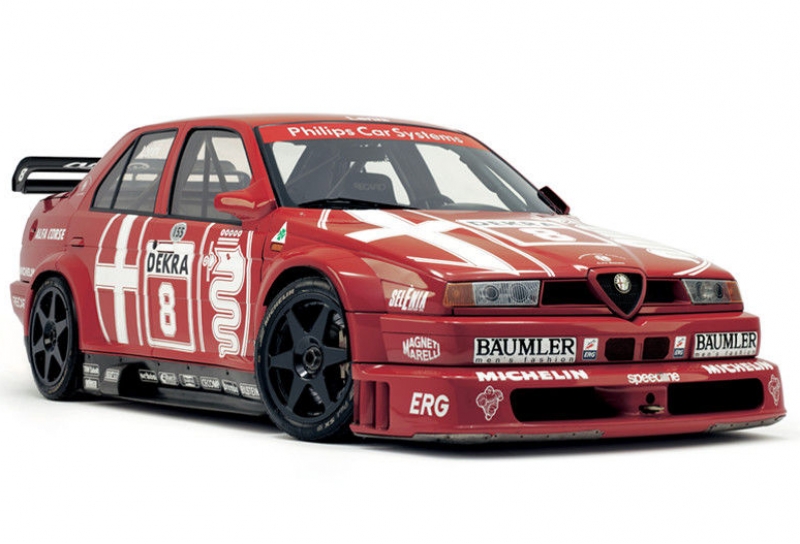
1992
The Alfa Romeo 155 Improved on the Alfa Romeo 75
Safe and sporty, the Alfa Romeo 155 was designed to replace the 75. Its new technical setup featured front-wheel drive and independent wheel suspension on front and rear axles. On the racing scene, the 155 V6 Ti helped Alfa Romeo win the Italian Superturismo title, along with a historic victory at the 1993 DTM championship.
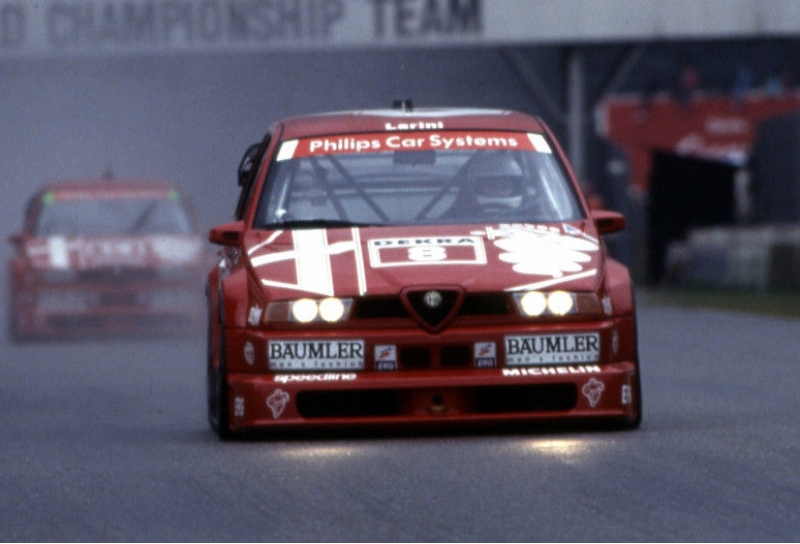
1993
Larini’s Miracle in Germany
Alfa Romeo made its debut at the German Touring Car Championship, entrusting its fate to Nicola Larini. Taking the wheel of an outstanding 155 V6 Ti, Tuscan-born Larini drove the fastest lap eleven times and finished first overall, beating the host nation in spectacular style.

1997
Alfa Romeo 156: The Record-Breaker
The birth of the 156 was revolutionary; it marked the beginning of a new way of designing automobiles. The Common Rail injection system for diesel engines proved to be a technological watershed, and a feature that would eventually be adopted by all automobile manufacturers.
Fitted with the sequential Selespeed gearshift – a racing legacy – Alfa Romeo’s new sedan was a huge commercial success; it would be awarded “Car of the Year” in Europe in 1998
2000sPERFECT PERFORMACE

2002
The 156 GTA and Sportwagon GTA
Both automobiles were inspired by the performance of the legendary Giulia Sprint GTA. The myth of pure sportsmanship, 36 years later, lived on in two models which evoked the same emotions of days gone by: the 156 GTA and the Sportwagon GTA.On the race scene, Fabrizio Giovanardi won the Italian Superturismo Championship two years in a row – 1998 and 1999.
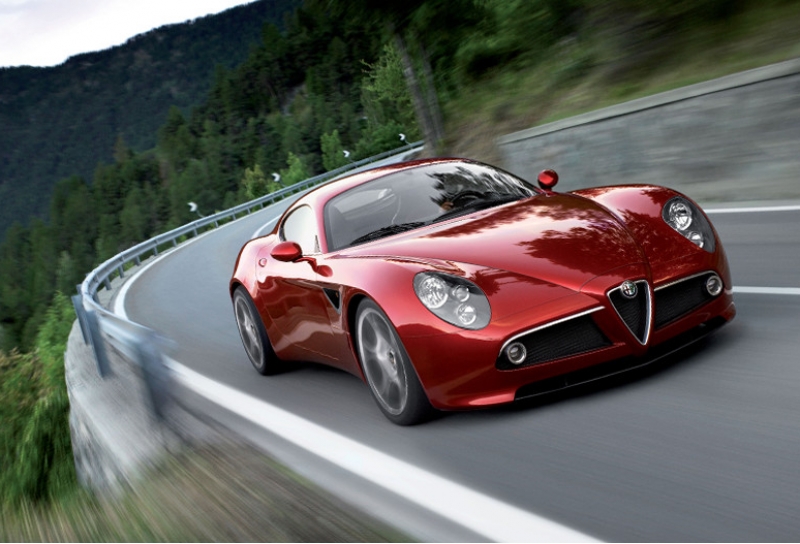
2007
The 8C Competizione
The 8C Competizione was a limited-edition Touring automobile which encapsulated all of Alfa Romeo’s values. It was the perfect blend of sporting heritage, Italian passion and technical innovation. Its name highlighted the continuity with the generation of 8-cylinder cars which wrote one of the finest chapters in motor racing history back in the 1930s. The spider version was launched in 2009.
2010sCELEBRATE A LEGEND
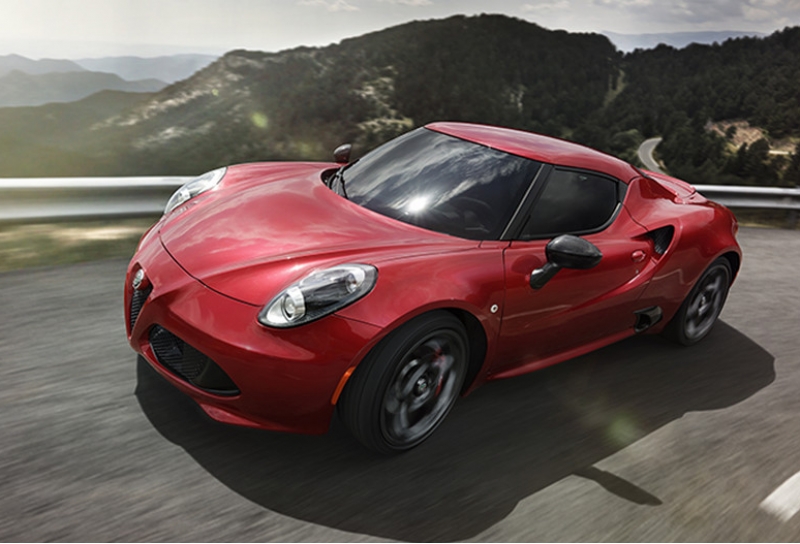
2015
4C Coupe and 4C Spider
The 4C Coupe continues an Alfa Romeo tradition of performance-oriented lines and proportions.Lightweight strength, supercar agility and race-inspired performance, the Alfa Romeo 4C makes its mark with an aggressive stance that’s owed to innovative technology and new levels of efficiency.###bb###Beyond delivering outdoor splendor, the open-air design of the 4C Spider includes an interior that caters to the senses.

2017
The All-New Giulia Quadrifoglio
The sportiest on-road Quadrifoglio ever. The all-new Giulia conveys pure design without being superfluous. Its styling is unmistakably Alfa Romeo, both sensual and substantial. It reflects the Alfa Romeo design heritage, with the focus constantly on the driver. Technology helps enhance performance and guarantee an exceptional driving experience. The relationship between driver and machine forms the core of every innovation, producing a car which is the natural extension of the brain, body and heart.
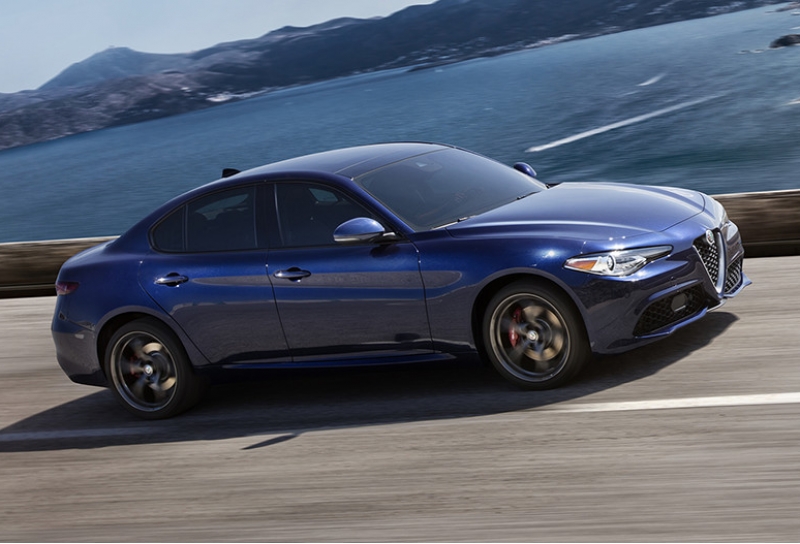
2017
Giulia and Giulia Ti
In the crowded market of sports sedans, the all-new Giulia arrives with all that it needs to own the game itself. Marked with the distinctive Alfa Romeo trilobe, pure allure is created through elegant lines, proportional balance and harmonious elements. The optimally balanced weight distribution, rear-wheel drive and available all-wheel drive, result in an aggressive stance; its profile of pure power and motion changes the horizon with a new perspective, truly exhilarating the driving experience.
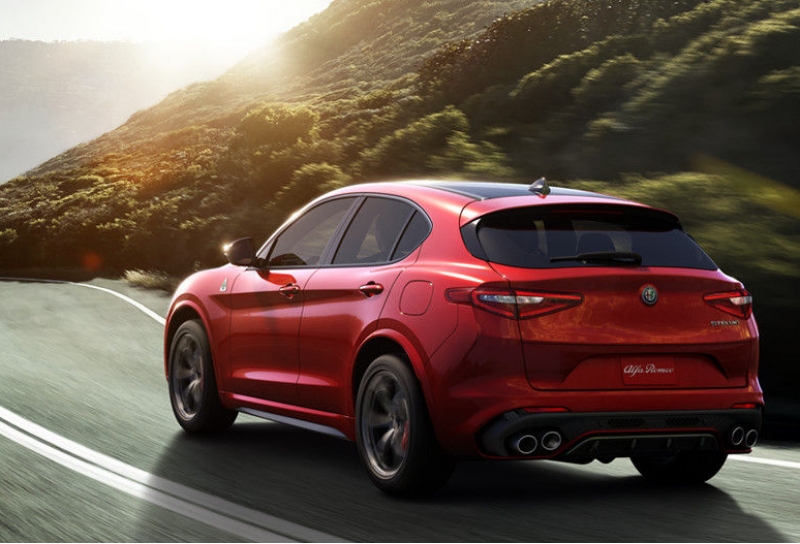
2018
Stelvio, an SUV Only Italy Could Create
Leveraging its heritage while looking toward the future, Alfa Romeo has created yet another masterpiece. The Stelvio: born from the world’s greatest driving road.Inspired by the immensity and grandeur of the Stelvio Pass, the dreamers of Milan, engineers of Modena and artisans of Cassino have created the optimal vehicle for those demanding the highest level of performance and utility in equal measure.
PHOTOS COURTESY OF
Archivio fotografico Museo Tazio Nuvolari. Mantova, Italy / Archivio fotografico Automobile Club Mantova. Mantova, Italy / Centro Documentazione Alfa Romeo. Arese, Italy / Archivio Storico La Stampa. Turin, Italy / Michelebella.com / Mondadoriportfolio.com / Shutterstock.com / Gettyimages.com / Alfaromeopress.com / Actualfoto.it
VIDEOS COURTESY OF
Istituto Luce. Rome, Italy / Centro Documentazione Alfa Romeo. Arese, Italy
FORMULA 1, F1, FIA FORMULA ONE WORLD CHAMPIONSHIP and related marks are trade marks of Formula One Licensing BV, a Formula 1 company.
